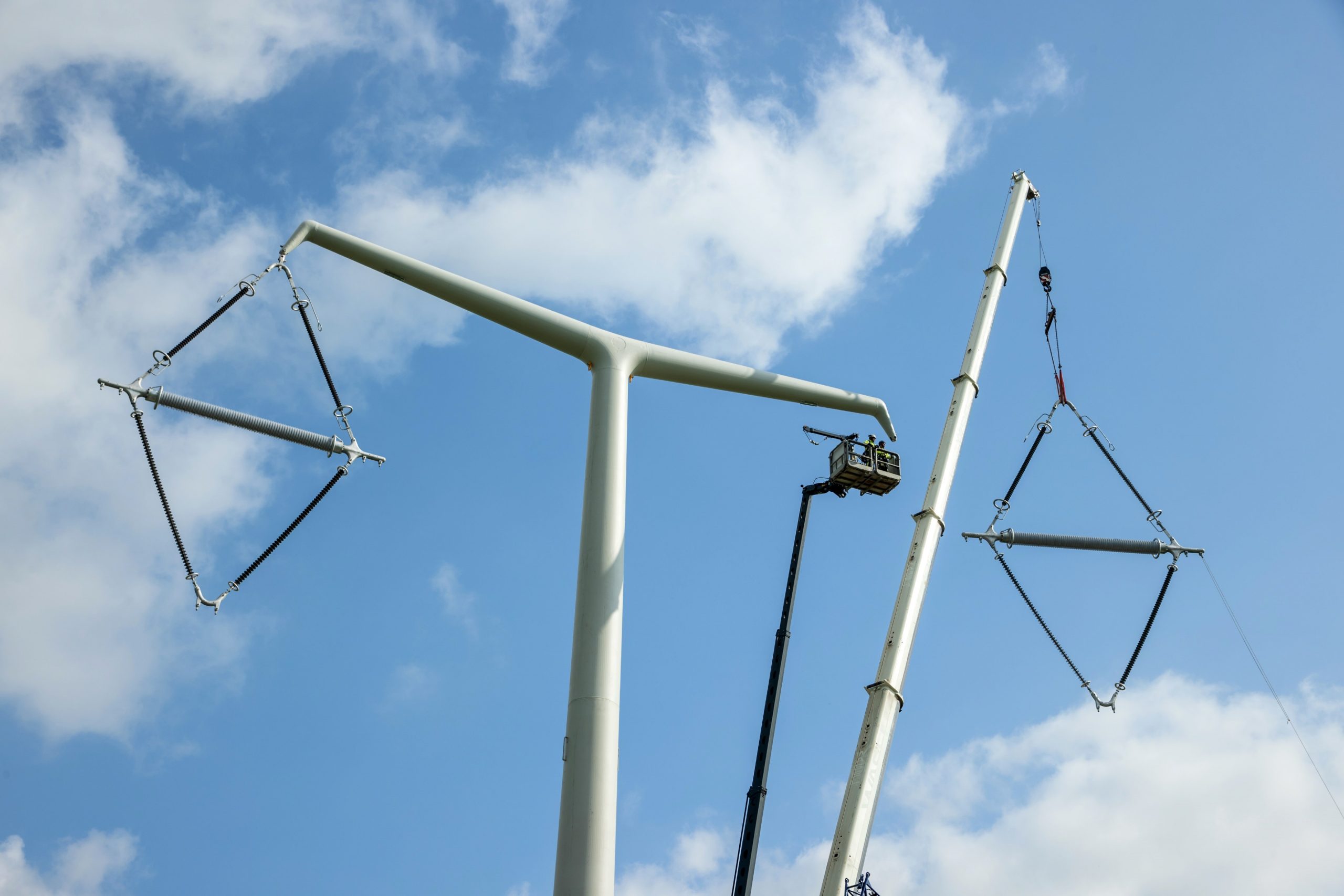National Grid’s Hinkley Connection Project has reached another milestone, with the linking up of all 116 of its new T-pylons, designed to replace the traditional four-footed lattices towers.
The last of the T-structures’ 232 diamond-shaped insulators – which hold the National Grid‘s voltage conductors in a diamond ‘earring’ shape – was recently lifted into place on a T-pylon between Yatton and Kenn in north Somerset. Principal contractor Balfour Beatty operated the crane.
T-pylons are quicker to erect than the traditional lattice design. A total of 48 T-pylons were completed – including installation of the conductors – by the end of 2022.
Representing a world’s first for pylon design, the first T-pylon to be built was constructed in September 2021 near East Huntspill.
36 new T-pylons between Woolavington and Loxton were energised in early 2023, meaning high voltage electricity is now running along the new T-pylons, and through cables under the Mendip Hills Area of Outstanding Natural Beauty, via the newly built substation at Sandford.
Meanwhile work began on erecting the 68 T-pylons running north of Sandford substation to Portbury. With the hanging of the final diamond insulators, those 68 structures are now complete.
All the T-pylons will be passing current by the end of 2024. Before then, conductors will be hung from the T-pylons, and the last of 249 traditional lattice pylons and 67km of overhead wires will be removed from the landscape to make way for the new electricity connection.
Roxane Fisher-Redel, Senior Project Manager for National Grid on the Hinkley Connection Project, said:
“National Grid’s T-pylons are the first new design for overhead electricity lines in over a century and will play a central role in connecting low carbon energy to millions of people when Hinkley Point C begins generation.
“Erecting all the 116 T-pylon structures is a huge milestone and now we look ahead to 2025 and full completion of this project, which will play such a key role in transmitting cleaner, homegrown energy around the UK – enough to power six million homes and businesses.”
The T-pylons were designed in response to community feedback. They are intended reduce the visual impact of transmission lines over its 57 kilometre connection route.
At 35m high, they are a third shorter than National Grid’s traditional lattice transmission pylons and take up less room on the land.
The new arrivals replace the old four-footed lattice, little changed since it won a competition run by the Central Electricity Board in 1927.
The classic design was submitted by Milliken Brothers, an US engineering firm, and chosen by architect Sir Reginald Blomfield, designer of London’s Lambeth Bridge.
Derived from ‘pyle’, the Greek word for ‘gate’, the first pylons were impressive obelisk-shaped towers guarding temple entrances in ancient Egypt.
British transmission engineers prefer to know the steel skeletons as suspension, tension or transmission towers.
Proving that the US and the UK are nations “divided by a common tongue”, west of the Atlantic ‘pylons’ are traffic cones.




